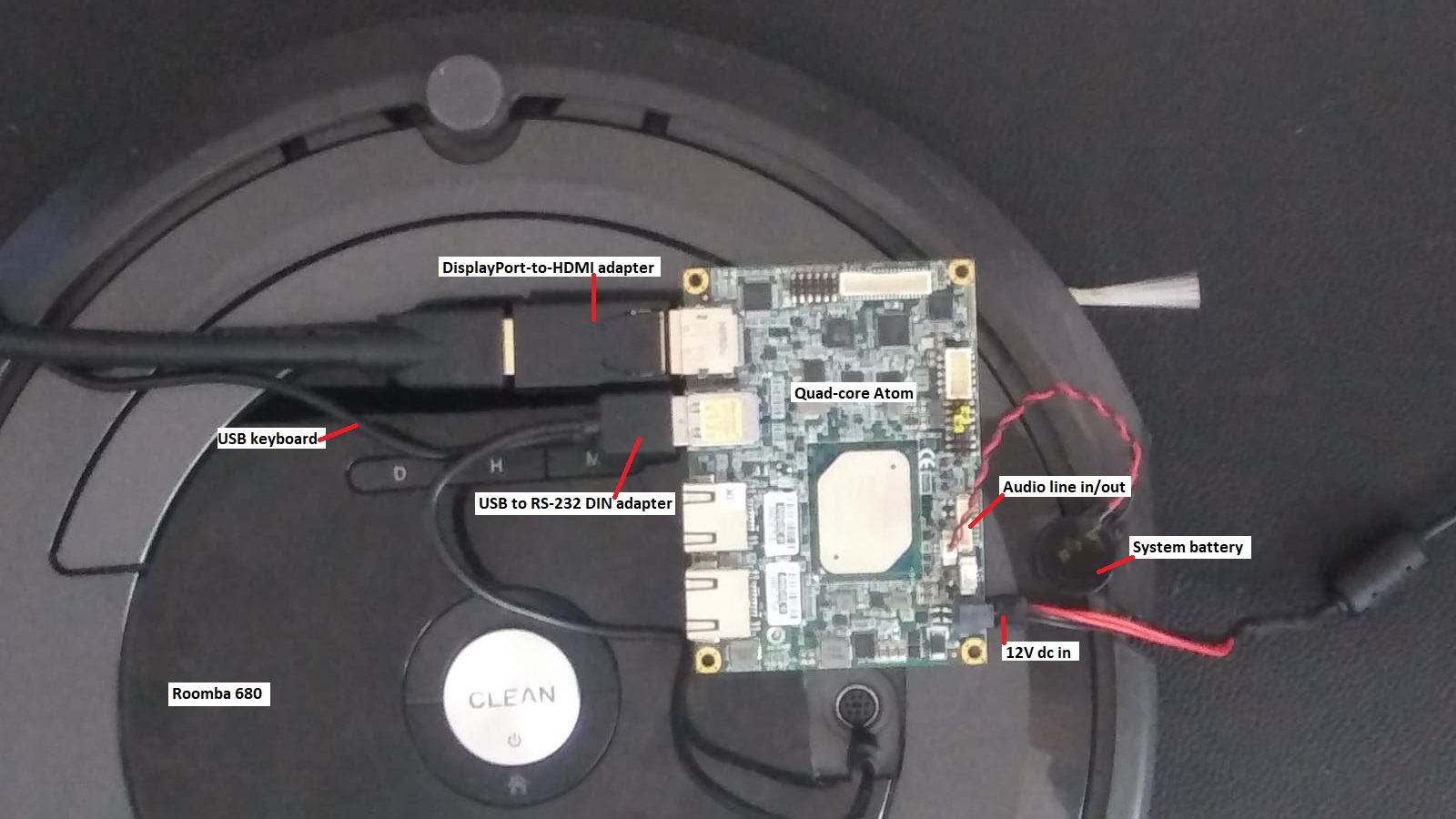RobotHPC™ Robotics HPC Edge Platform
- Overview
- Applications and Use Cases
- Extreme HPC in Light, Thin, Low Power Form-Factor
- Optimized, Private, and Cost-Efficient vs Public Clouds
- Orchestration and Management
- Roomba ASR Demo
- Software Architecture
- EdgeStream™ Software SDK and Demo
Overview
The RobotHPC™ robotics HPC 1 edge platform enables high performance, computation-intensive onboard processing in small and low-power form-factors. Examples include multi-thousand image and word recognition and failure prediction in mobile robots, drones, automatic vehicles, emergency and maintenance vehicles, and more. When the Internet is not available -- or when it is and data privacy and cost-efficiency are key requirements -- the RobotHPC platform enables your application.Applications and Use Cases
The RobotHPC™ platform is a combined software + hardware solution designed for smart, capable, and safe robots, avoiding public cloud limitations and privacy issues. Examples include:- Mobile robots - implement 20,000 word vocabulary ASR 2 for human safety / emergency situations, regardless of WiFi or Internet dropout. Prioritize human safety above all else by allowing people to warn off or immediately pause robot activity
- Robotaxis - respond to alerts shouted by other human drivers, law enforcement, and fire fighters, regardless of Internet connectivity. For example, a police officer yells "pull over, raise your hood", "turn on your flashers -- or "pull ahead and move away from all other cars" (e.g. a battery issue) -- the robotaxi must respond immediately. A large vocabulary is needed as command wording and sequence are in unpredictable combinations, given under stress
- Factory robots - add human safety, hands-free commands, and full data privacy. Achieve "zero trust operation" with no background conversation or proprietary factory sounds sent to public clouds. Incorporate failure prediction algorithms as needed
- Drones - enable high performance image recognition, group / swarm coordination, and other real-time functionality with no cloud dependency
- Vehicle automation - implement add-on / after-market safety and driver assist products such as small form-factor Lidar

|
| RobotHPC™ pico ITX robotics platform, top view |
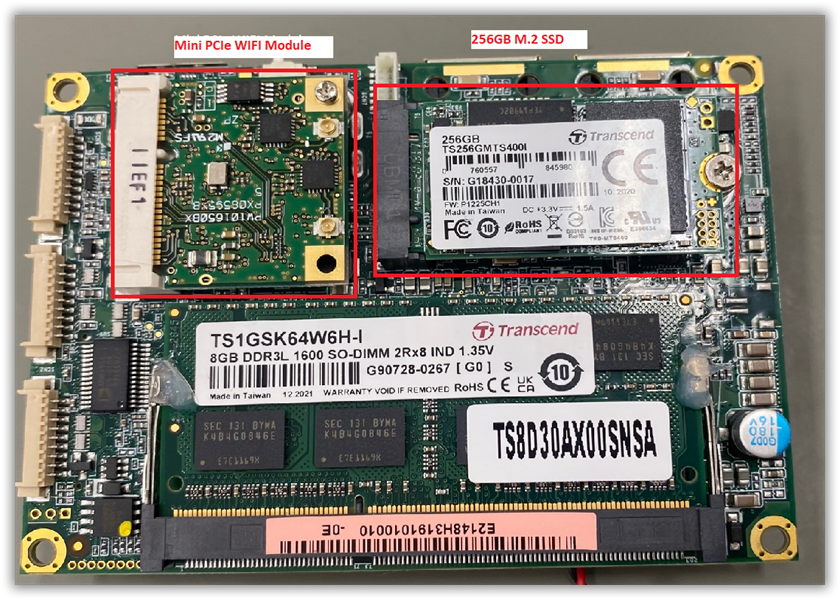
|
| RobotHPC™ pico ITX robotics platform, back view |
Extreme HPC in Light, Thin, and Low-Power Form-Factor
The RobotHPC™ platform enables extreme performance while maintaining a small, light weight, low power (low SWaP 3) form-factor. Below are key hardware and software specs:In the above specs, the most important is EdgeStream™ software, an optimized, multithreaded framework for real-time media, packet, and inference processing. EdgeStream was originally developed for ultra high capacity telecom and lawful intelligence applications, which require careful optimization for both high performance and "5 9s" level of reliability. This high level of optimization, developed for a wide variety of applications over many years, is what allows HPC in a SWaP-constrained form-factor. 3 Size, weight, and power consumption
Optimized, Private, and Cost-Efficient vs Public Clouds
Onboard real-time HPC requires optimization for both performance and power consumption. Public clouds prioritize neither. Instead, cloud providers focus their "sweet spot" pricing on millions of data, web, and IT transactions; if these are delayed a half second or a second they don't care. And when they get hacked, they don't care about that either -- you may not know for months. But if your robotics application needs guaranteed human safety / emergency response times and reliability, or your background conversations and personnel images must remain private and unhackable, then you care, and public clouds pose unacceptable risks. From a cost perspective, as your number of robots increase, allocating each robot's "HPC brain" as a remote public cloud compute instance consumes substantial CPU resources and becomes cost prohibitive. As a cost / benefit analysis example, consider 20 mobile robots in a factory, each required to provide guaranteed-on, real-time 20,000 word vocabulary ASR and 60,000 image recognition. Using AWS 4, this would be approximately $80 per month per robot, or approximately $20,000 per year. Public clouds provide a number of benefits, but low-cost HPC is not one of them. From a carbon footprint perspective, public clouds use massive amounts of electricity. As shown in the chart below, nearly half of cloud electricity usage is spent on cooling -- which is why massive cloud server facilities are located near sources of low-cost energy and "natural heatsinks" such as rivers. In your robotics application, by implementing an onboard, optimized solution you take control of carbon costs, using only the amount of electricity necessary to get the job done, without transporting audio and image data long distances, sharing high-end servers with other applications, SBaaS ("software bloat as a service"), and other wasteful aspects of cloud computing.
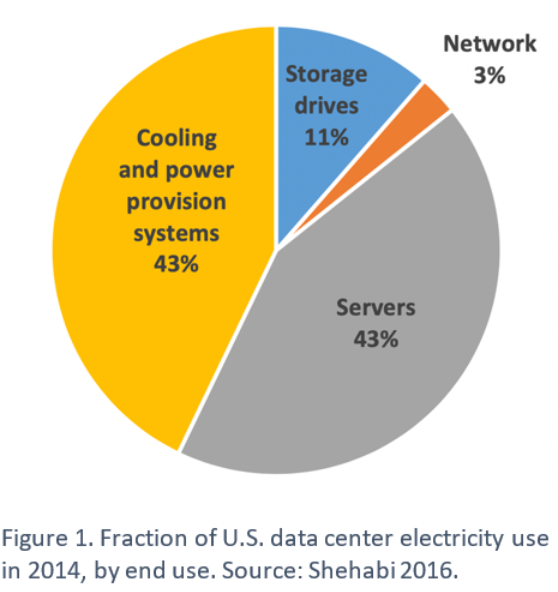
|
| Public cloud electricity usage (chart copied from this page) |
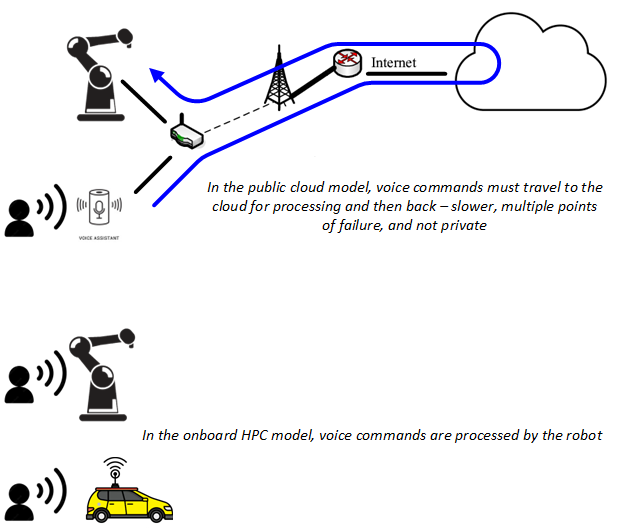
|
| Robot voice processing data flow - public cloud vs onboard HPC comparison |
Orchestration and Management
The RobotHPC™ platform supports containerization and container management, including Kubernetes and Docker containers. This enables cloud control and automation of robot tasks, telemetry feedback, failure management, event logs, updates to deep learning training, and life cycle management. This use of public clouds requires only low data rates and non-real-time level of compute resources, maximizing cloud providers' core value and minimizing their monthly costs. Processing data in non-real-time (also known as "batch mode") matches public cloud achitecture and purpose.
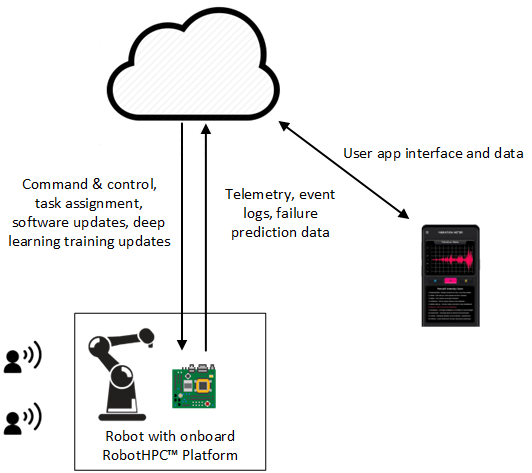
|
| RobotHPC™ orchestration and management flow diagram |
Roomba ASR Demo
To demonstrate the RobotHPC™ robotics edge platform, Signalogic engineers have “dead bugged” a quad-core pico ITX server onto a Roomba 680. Functional objectives of the demo are noise removal (vacuum and servo motor) and accurate voice command processing, including safety and convenience commands. Some example voice commands and the Roomba operating commands to which they translate:| "Hey Roomba, stop now" | Stop |
| "Watch out Roomba !" | Pause |
| "Not now Roomba, come back later, I'm on the phone" | Return to base station |
Instead of a single wakeword combined with a small vocabulary (20-50 words), the RobotHPC platform allows multiple wakewords and a large (20k word) vocabulary. The use of additional words, sentences, and language context reduces false positives, necessary in factory and retail environments with a wide range of background conversation and sounds. Also this maintains full privacy (public cloud zero trust operation), eliminating the need for continuous cloud upload and repetitive "re-training" as done with Alexa, Cortana et. al. (i.e. additional training based on expected voices of family members, employees, etc). From a mathematics perspective, this approach is similar to convolutional encoding, the basis for communication channel error rate reduction breakthroughs in the 1980s and in widepread use today. Here are some notes about the demo:
- the pico ITX server operates without fans so as to not introduce additional noise
- power input is 12V dc (battery for the Roomba demo, AC adapter for lab environment)
- an adapter cable connects a RobotHPC USB port to the Roomba's RS-232 DIN port, over which recognized/translated voice commands are sent to ROS running on the Roomba
- another RobotHPC USB port is connected to a USB microphone. Audio line-in input (e.g. 1/8" jack) is also available
- in the lab, Signalpogic engineers use standard tools for development, test, and debug; e.g. WinSCP, cmd line, g++/gcc, gdebug, etc. For development purposes, the RobotHPC platform looks like a (very) small Ubuntu Linux server, including keyboard and console
Software Architecture
The RobotHPC™ platform incorporates EdgeStream™ software, designed for high-performance real-time processing, reliability, and security. The EdgeStream software architecture emphasizes:- Extreme reliability - EdgeStream components are deployed worldwide, including government and telecom customers who require five 9s reliability (or more). In Signalogic labs, combined functionality and stress tests are continuously run for 4000+ hour durations
- Automatic control over power consumption and resource usage
- Fundamental security and data privacy design considerations - no third-party library dependencies and no outsourced coding. Source code can be maintained in Escrow for inspection as needed
- Optimized data flow design, with no "thread slicing", microservice overhead, inefficient "scaling out", and other impediments to real-time HPC found in public cloud native applications
- Flexible media I/O, including external device, network packet flow, and file. For packet media, EdgeStream supports a wide variety of RTP codecs, including AMR, EVS, G711, G729, MELPe, H.264, and more
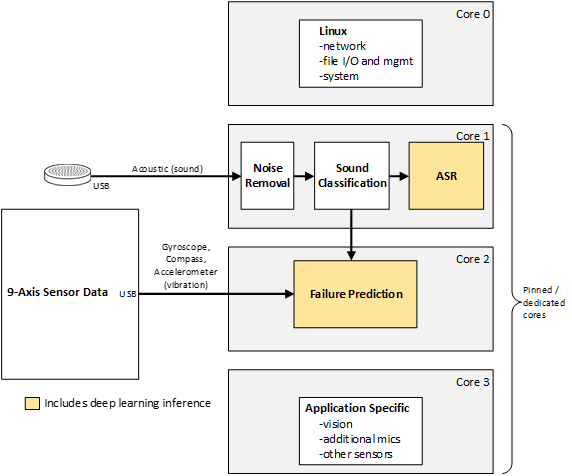
|
| RobotHPC™ robotics platform software architecture |




